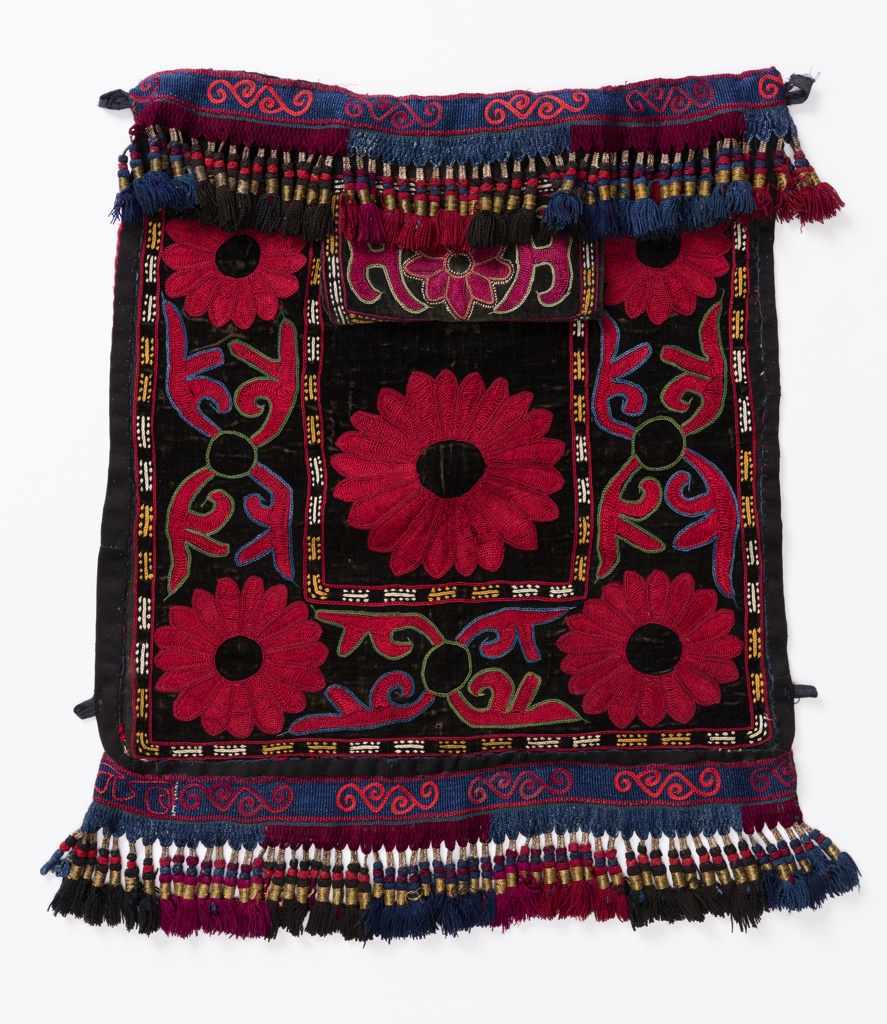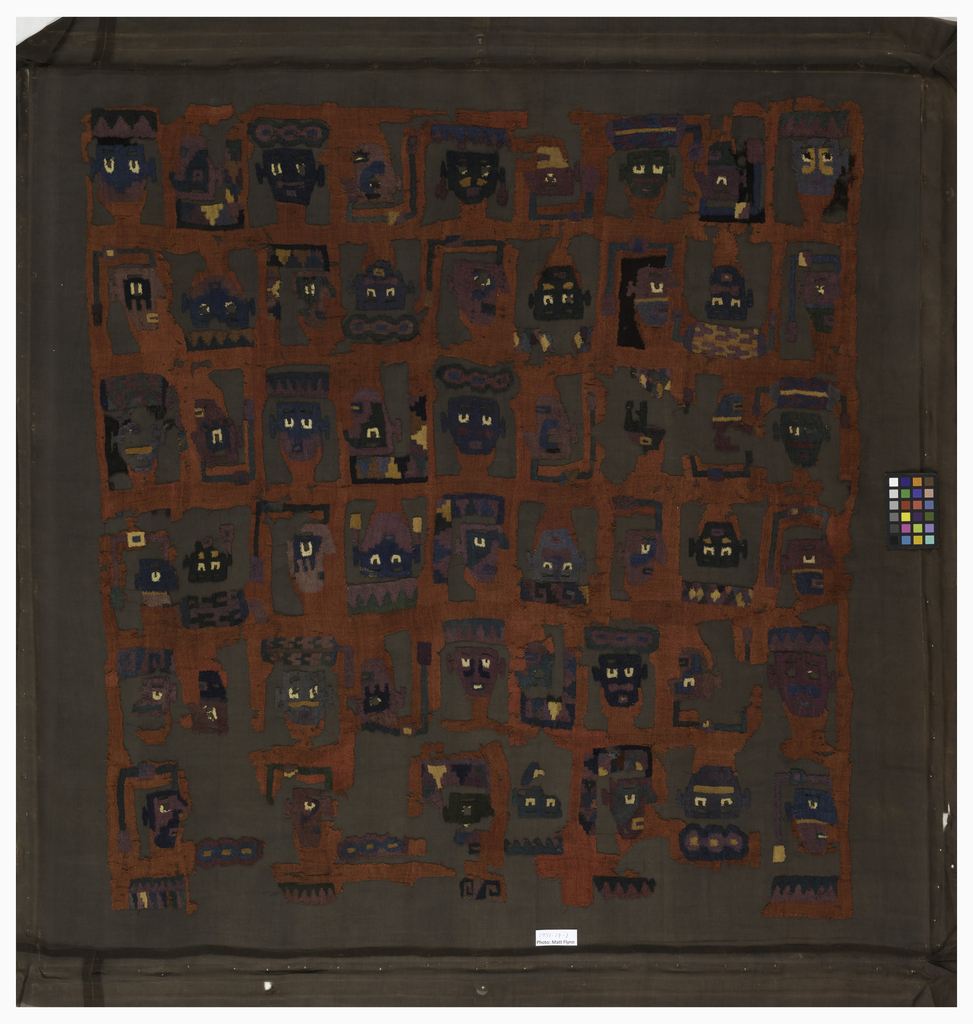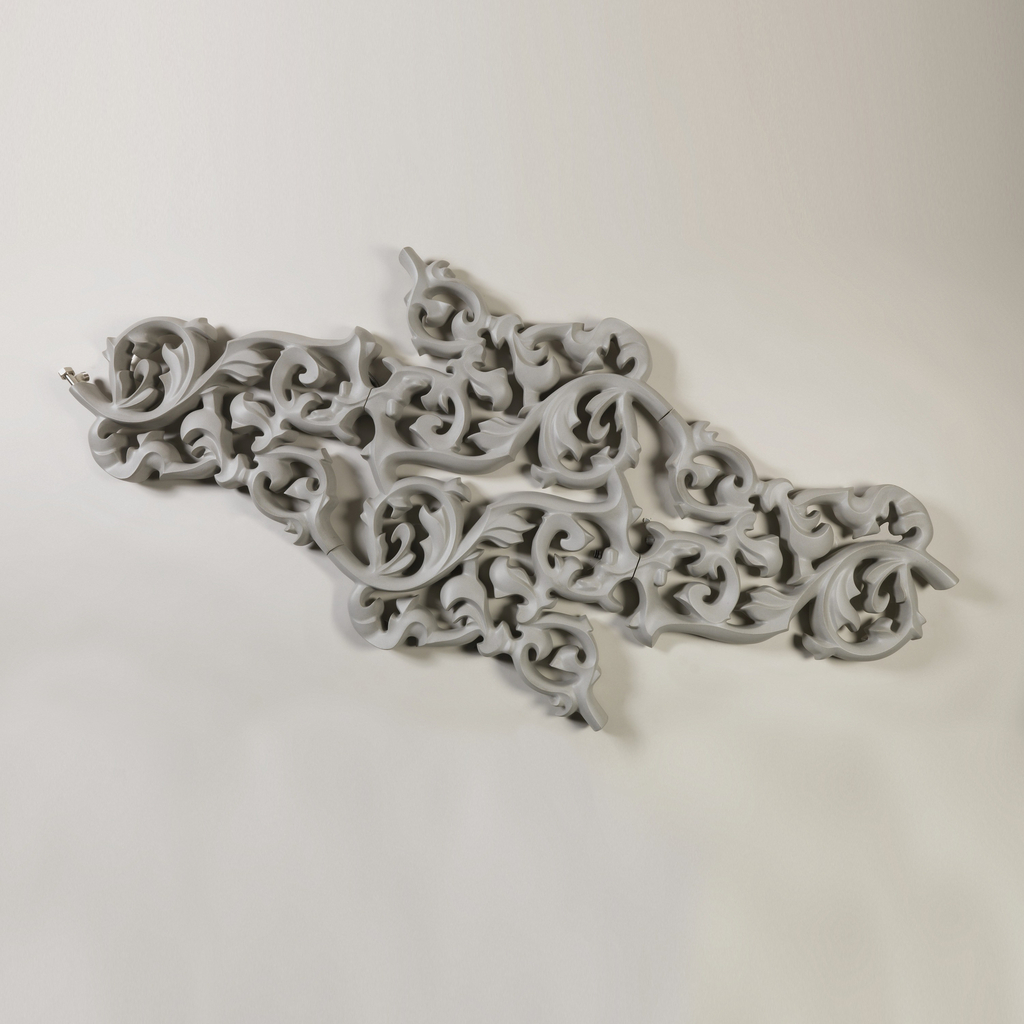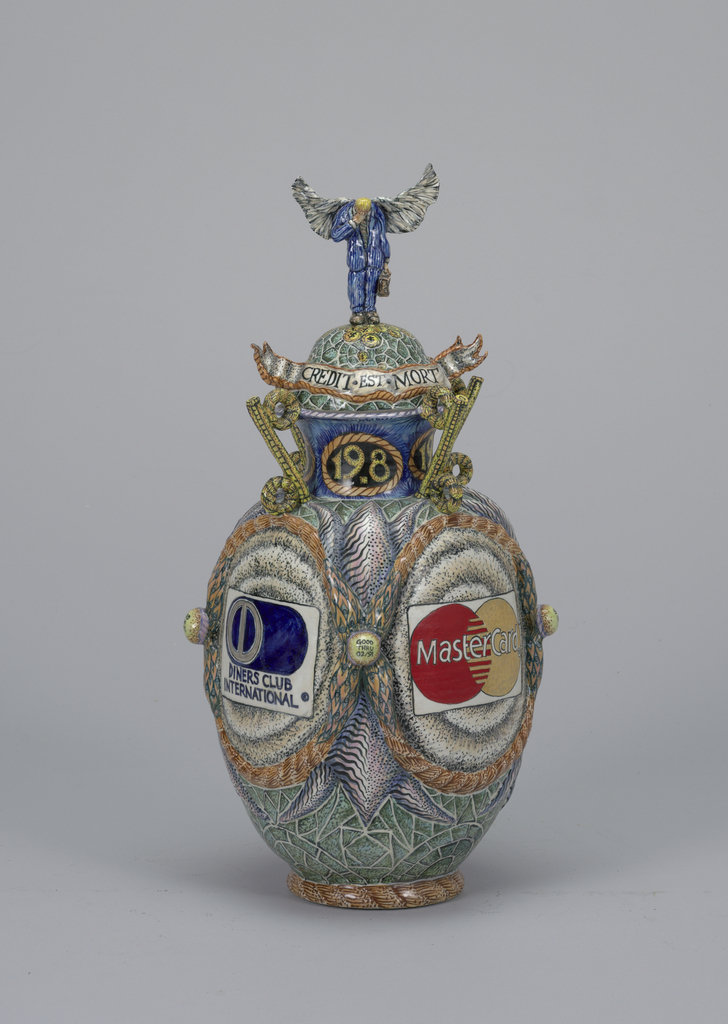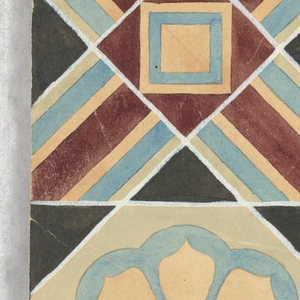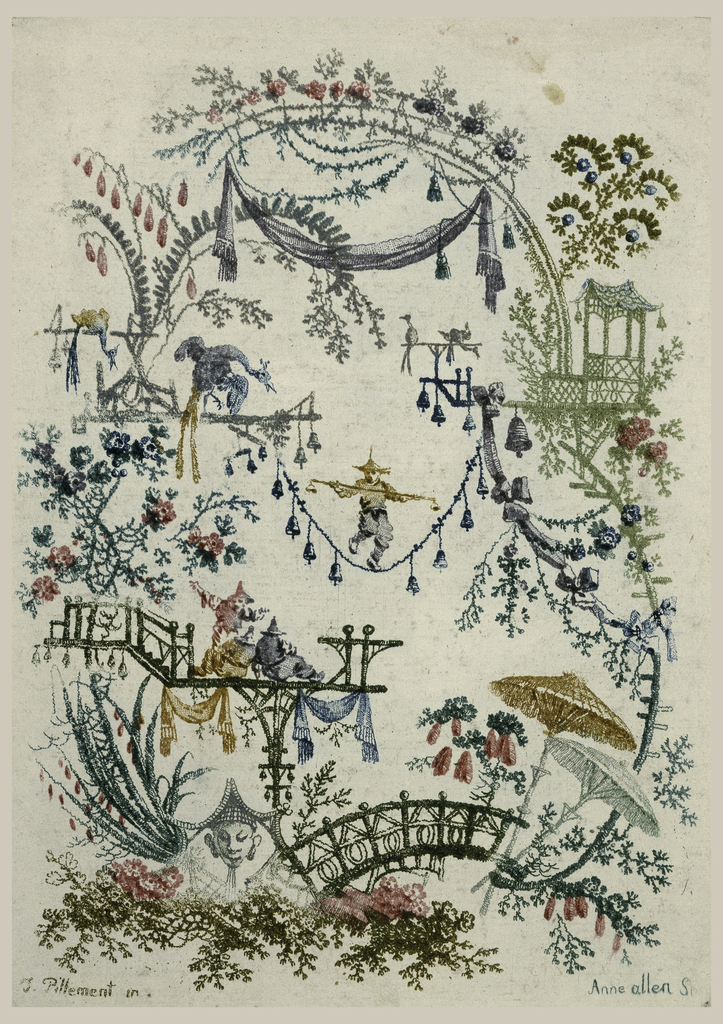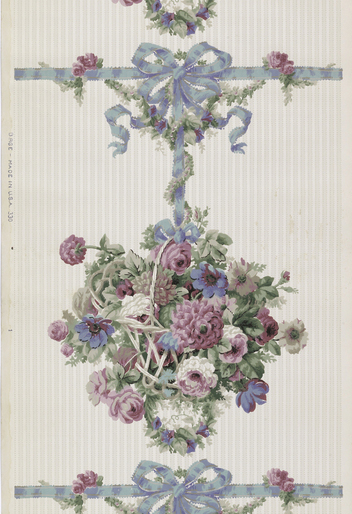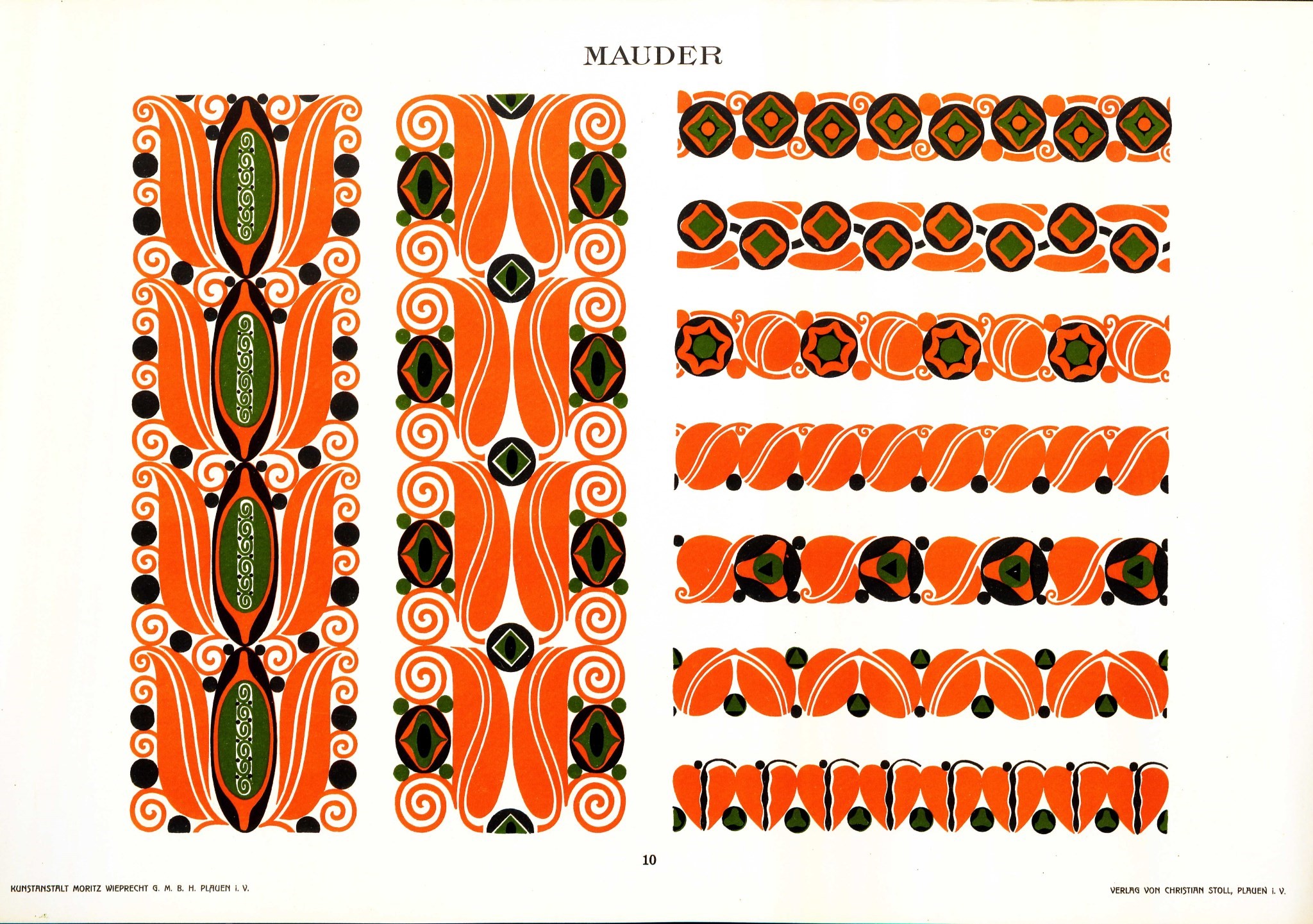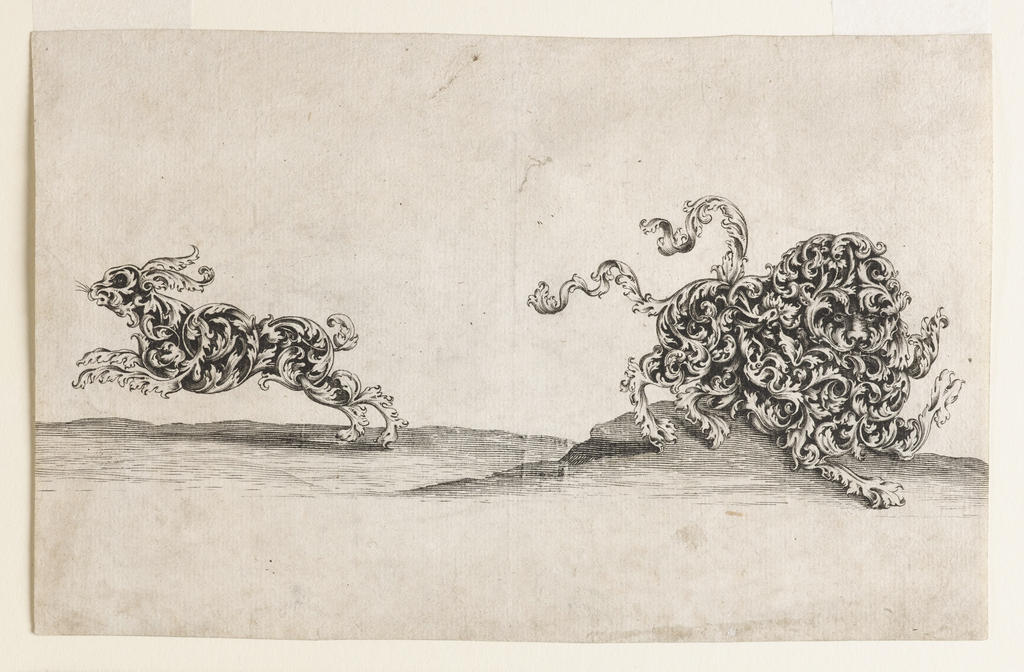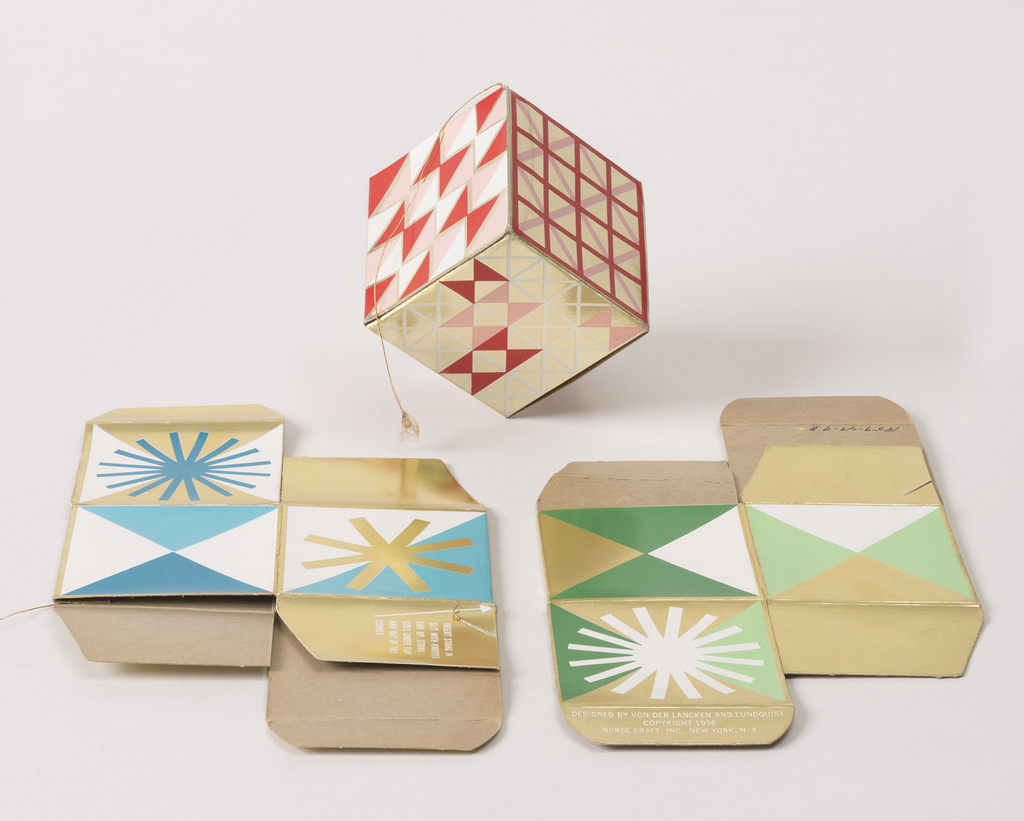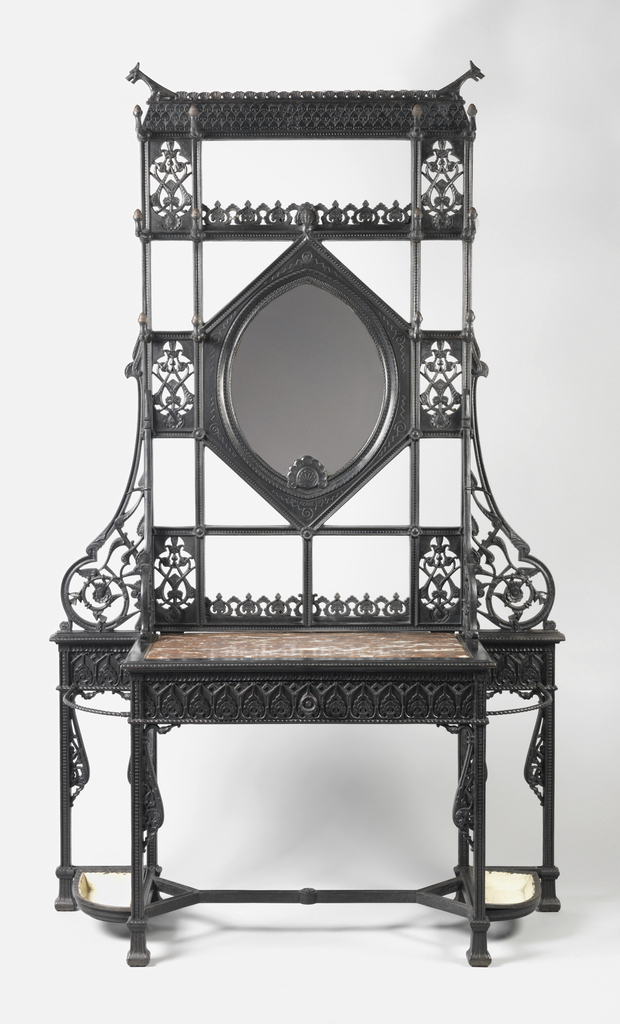In Kyrgyzstan, the nomadic past is evident in the quantity of collapsible, portable textile furnishings. Textile objects found in Kyrgyz homes include patchwork, embroidered, or appliquéd quilts, saddle bags, pot holders, rugs, clothing, room dividers, and in the case of yurts, tent flaps. These garments and housewares are often made as part of a bride’s...
“Fast and easy” is how this collection of borders was marketed to the public. Designed especially for the do-it-yourself market, these narrow borders were packed in individual boxes, sold in twelve foot lengths, and all were pre-pasted. They just had to be dipped in water and stuck on the wall, though consumers were advised to...
The production of this type of cloth was confined to a brief period of great artistic achievement in the Nasca region. The portrait heads appear to be of human rather than deity figures, and seem to represent individuals of varied status and perhaps ethnicity, signaled by the wearing of certain accoutrements. Features of the figures...
A version of the Heatwave Radiator is included in the exhibition Joris Laarman Lab: Design in the Digital Age, on view at Cooper Hewitt, Smithsonian Design Museum through January 15, 2018. Radiators have long been used to exchange heat, transfering thermal energy from one medium to another for the purpose of space heating. Their primary...
This reliquary vase, created by Matt Nolen, is featured in the exhibition, The Virtue in Vice, currently on view at Cooper Hewitt. The vase was selected as a visual interpretation of greed, here defined as the acquisition of large sums of money, universally recognized as the hallmark of avarice. Though tongue-in-cheek, Nolen’s reliquary pointedly illustrates...
Examples of Chinese Ornament Selected from Objects in the South Kensington Museum and Other Collections (figure 1) was written by Owen Jones (1809-1874), one of the most influential English architects, designers, and design theorists of the nineteenth century. Jones selected 100 full-color plates sourced from the motifs of Chinese ceramics, cloisonné works, and carpet designs,...
Frederick Krieg’s colorful design for a two-part part tile pattern is depicted in a three by three grid. The result is an alternating composition that maintains unity through repeated colors (light blue, bisque, and charcoal) and angles (hexagonal and inverted). Krieg’s precision is all the more impressive given the medium: watercolor paint. A self-taught designer...
Title: The Architect, builder and woodworker. Publisher: New York [etc.] C.D. Lakey [etc.] 1868- Smithsonian Libraries Reference Number: NA1. A43 CHMRU Builder and Wood-Worker Masthead. Vol. 18, no.2 Feb, 1882. NA1. A43 CHMRU The Cooper Hewitt Library collects a variety of trade periodicals, especially those dealing with architecture and the building trades. The Architect,...
What is the importance of being able to place a name upon the things we create? Perhaps it gives one the ability to become more than just a faceless member of a crowd, to leave behind a mark of what they have made. Historically, women have often remained nameless with the things they create. This is...
Louis Sullivan’s ornament can be appreciated on both a large scale—think Chicago’s Carson Pirie Scott building—and a small one—this cast iron doorplate. Having been removed from its original location during the mid-twentieth century, this doorplate is from Adler & Sullivan’s last commission, the Guaranty Building (now called the Prudential Building). The building became a National...
I find these hanging baskets rather a novel idea in home decoration. These are used in place of the wide friezes that became popular in the very late years of the nineteenth century. Wide friezes were printed on the paper in a horizontal fashion, which makes perfect sense as that is how they were hung....
Bruno Mauder (1877-1948), a designer of glass art, studied at the School of Applied Arts in Munich from 1899 to 1901 and in 1909, was appointed director of technical school for glass industry and wood carving in Zwiesel, Germany. For the next 40 years, Mauder worked as a glass designer in this area including the...
A lion and a hare are composed entirely of scrolling acanthus leaves in this late-seventeenth-century engraving. It is the fifth plate from a suite of six designs for gold ornament, entitled Neu-ersonnene Gold-Schmieds Grillen (New Designs for Ornaments in Gold). The acanthus motif, whose origins date to ancient Greece and Rome, was omnipresent in European...
These cubic cardboard ornaments are just the thing for an atomic holiday. Designed in 1956 by Van der Lanken and Lundquist and manufactured by Norse Craft, Inc., they were exhibited the next year at the 3rd annual American Package Design Competition held at Cooper Union and were subsequently given to the museum’s collection. A modern...
The phantasmal world of Dr. Christopher Dresser’s ornamentation delights both the eye and the imagination. Dating from 1875, this iron hallstand features all the quintessential elements of Dr. Dresser’s highly stylized ornament. The “spikey” floral and figural motifs—also recognizable in this illustration for two grotesque dado rails—and his angular interlaced arabesques are frequently used in...
